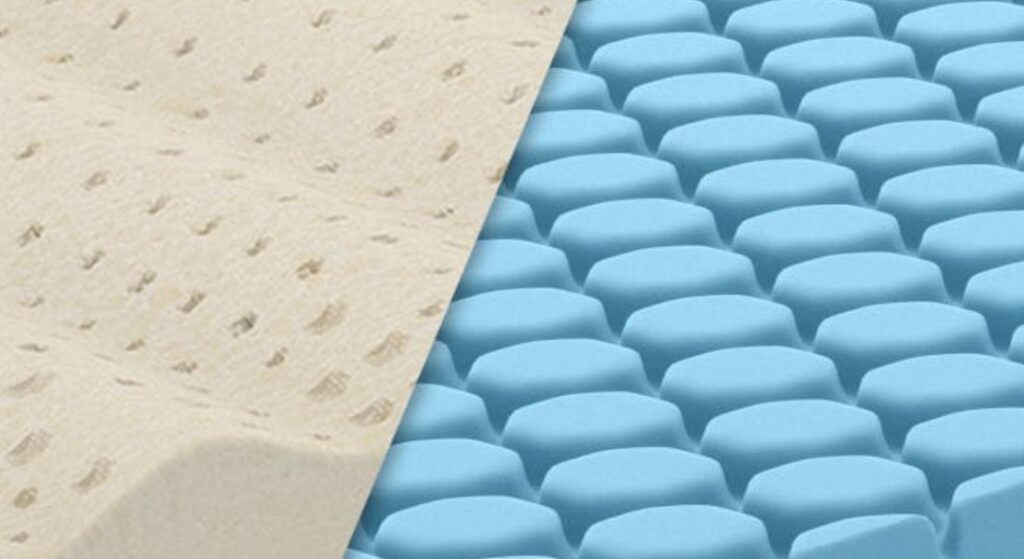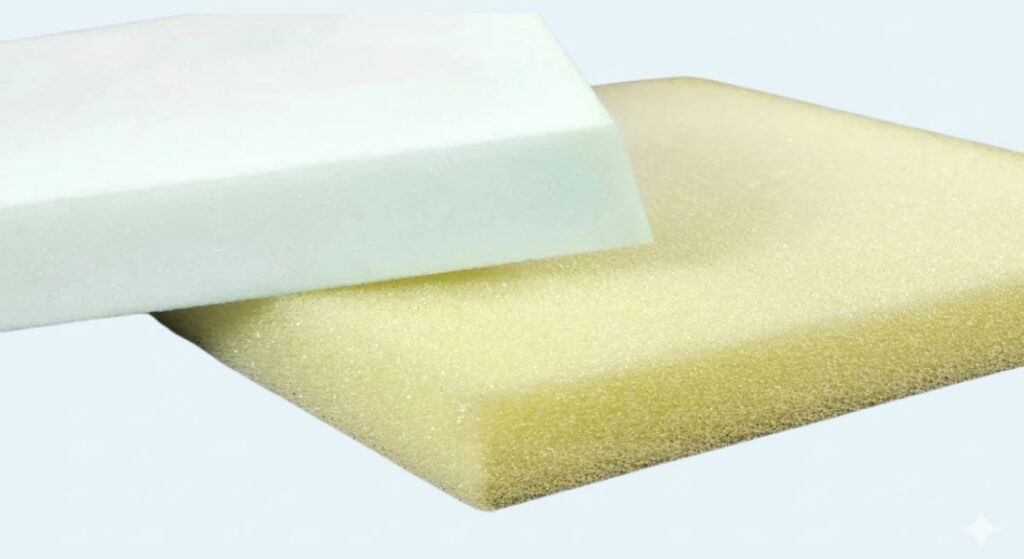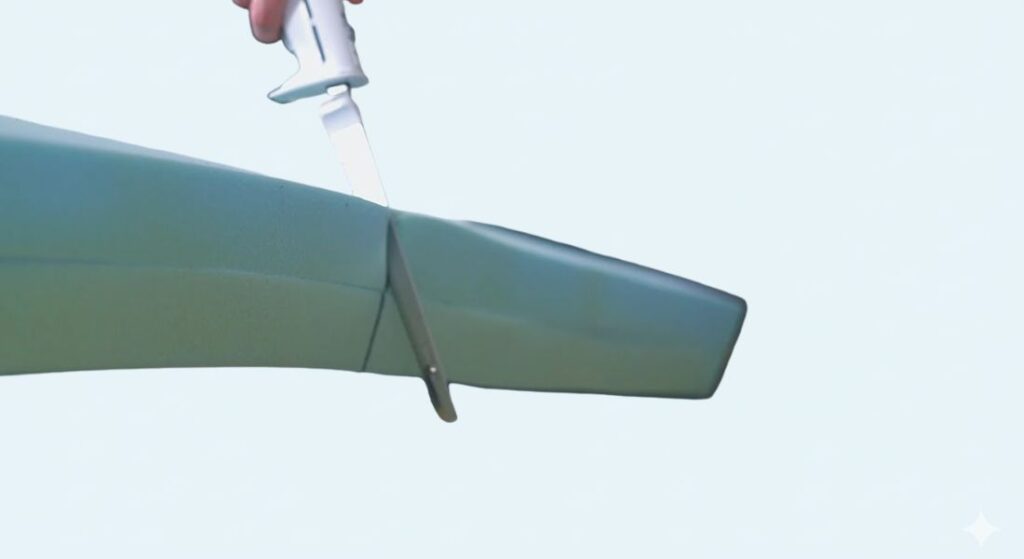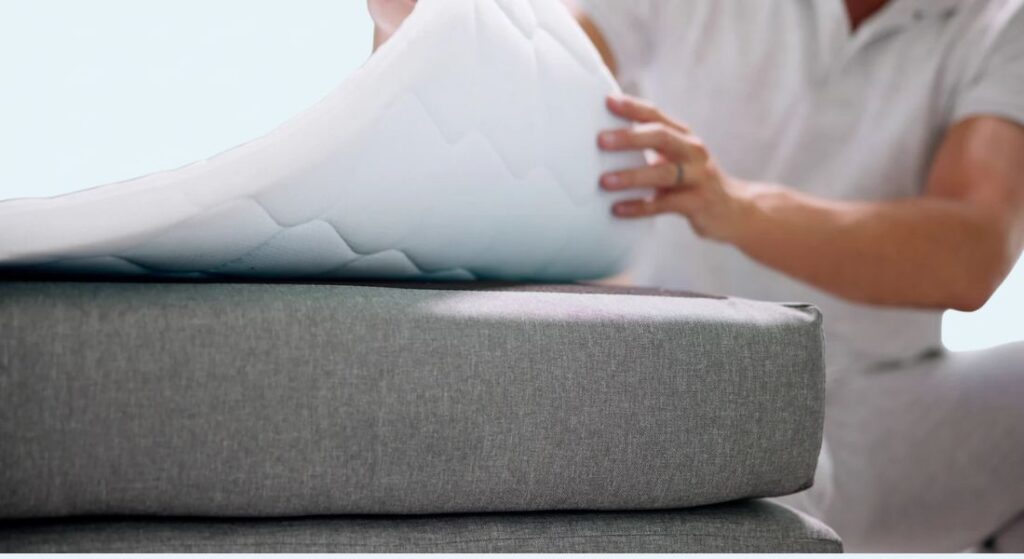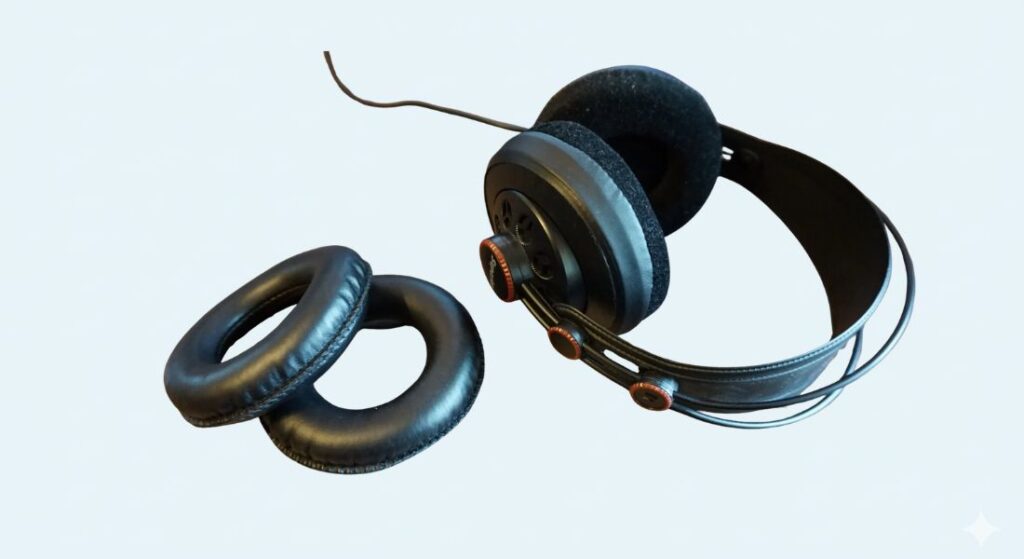You’ve narrowed your mattress search to memory foam, but latex allergies make you hesitate. That nagging question won’t leave you: do memory foam mattresses have latex? If you’ve ever broken out in hives after testing a bed or spent nights researching mattress ingredients, you’re not alone. Millions with latex sensitivities face this confusion daily. The critical truth? Standard memory foam mattresses contain absolutely zero latex in their core construction. But hybrid models muddy the waters by combining both materials in separate layers. This guide cuts through the marketing fog with FTC-backed facts, visual identification tricks, and a foolproof shopping checklist—all verified by mattress engineers and allergy specialists. You’ll learn exactly how to spot hidden latex, decode deceptive labels, and find truly latex-free sleep without compromising comfort.
Memory Foam’s Polyurethane Base vs Latex Rubber: Zero Ingredient Overlap
Forget what salespeople claim—memory foam and latex are chemically incompatible materials. Memory foam is 100% synthetic viscoelastic polyurethane, created through a reaction between polyols and isocyanates. This NASA-developed foam gets its slow-sink feel from petroleum-based polymers, not natural rubber. Latex, meanwhile, comes from either rubber tree sap (natural) or styrene-butadiene rubber (synthetic). These materials share no common proteins or chemical structures. The FTC has even issued warnings against “natural memory foam” claims because such a material doesn’t exist. When manufacturers blend soybean or castor oil derivatives into memory foam (marketed as “bio-memory foam”), it still contains less than 30% plant-based content—remaining fundamentally polyurethane without a trace of latex.
Why “Natural Memory Foam” Is a Red Flag Phrase
You’ll see misleading terms like “eco-memory foam” or “natural memory foam” plastered across online listings. These are marketing traps. The Federal Trade Commission has repeatedly penalized companies for this deception because true memory foam cannot be natural or latex-based. If a mattress claims “natural memory foam,” it’s either:
– A hybrid with separate latex layers
– Plant-based polyurethane (still synthetic)
– Outright false advertising
Always demand layer diagrams before buying. Genuine memory foam specs will list only “polyurethane foam,” “viscoelastic foam,” or “gel-infused polyurethane.”
How Hybrid Mattresses Combine Memory Foam and Latex Layers

Pure memory foam beds contain no latex whatsoever—but hybrids deliberately layer both materials. In a memory foam + latex hybrid, you’ll typically find:
– A 2-3 inch memory foam comfort layer (for pressure relief)
– A separate 1-2 inch latex transition layer (for bounce)
– A polyfoam or coil support base
This design solves memory foam’s heat retention issues while keeping that signature contouring. Crucially, these layers remain physically distinct—you won’t find latex mixed into the memory foam. Brands like Saatva and Avocado explicitly market these as “latex hybrids,” but untrained sales staff often mislabel them as “memory foam mattresses.”
Spotting Latex in Layer Diagrams (Visual Guide)
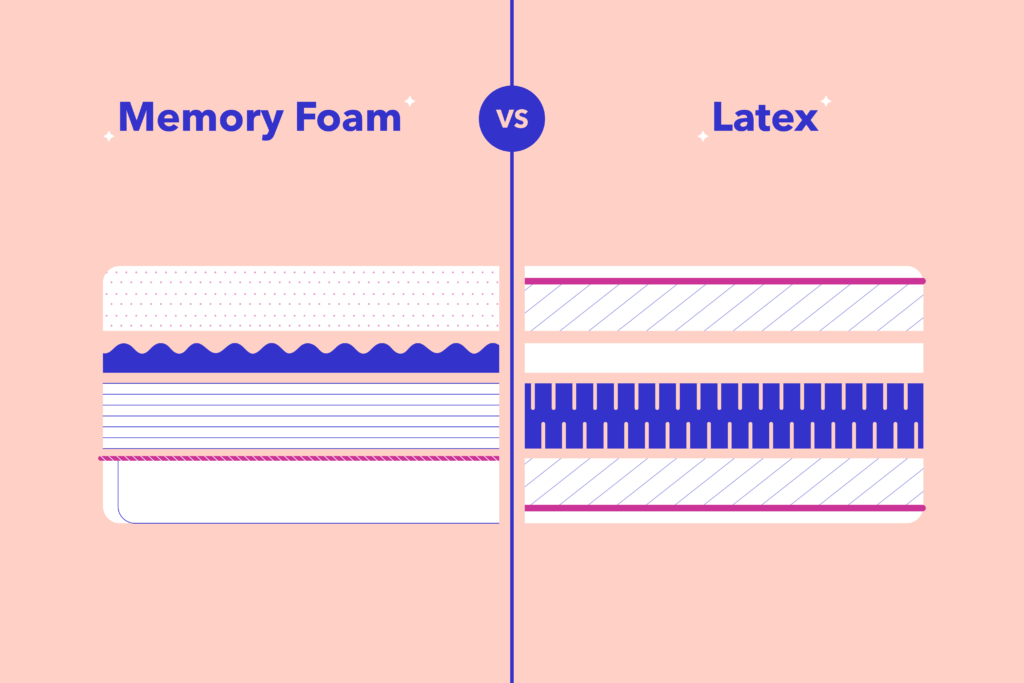
When examining product specs, look for these visual clues:
– Pure memory foam: Shows uniform foam layers labeled “polyurethane” or “viscoelastic”
– Hybrid: Displays two distinct comfort layers (e.g., “2” memory foam + 1.5″ Talalay latex”)
– Latex mattress: Lists only “Dunlop” or “Talalay latex” layers
Pro tip: Request the law tag photo from retailers. By law, it must list exact materials—phrases like “natural rubber” or “SBR latex” confirm latex content. If they refuse, walk away.
Confirming Zero Latex Risk for Allergy Sufferers

If you have a latex allergy, standard memory foam mattresses pose no risk. The manufacturing process eliminates all natural rubber proteins, and polyurethane contains zero latex compounds. Many allergy sufferers mistakenly blame memory foam for reactions actually caused by VOC off-gassing from new foam. Symptoms like headaches or skin irritation usually fade within 72 hours as odors dissipate—not because of latex exposure.
Your 3-Step Allergy Safety Verification
Don’t trust marketing claims—verify with these concrete steps:
1. Scan the product description for “polyurethane foam” or “viscoelastic foam” (latex-free indicators)
2. Confirm CertiPUR-US certification—this explicitly prohibits latex and ensures low-VOC emissions
3. Email the manufacturer with: “Does any layer contain natural or synthetic latex?” (Require written confirmation)
Brands like Nectar and TEMPUR-Cloud provide immediate written assurance of zero latex content. If a company hesitates, choose another mattress.
FTC-Banned Marketing Claims: Spotting “Natural Memory Foam” Lies
The mattress industry thrives on confusion, but these red flags expose latex deception:
– ❌ “Natural memory foam” (FTC warns this is always false)
– ❌ “Eco-memory foam” (refers only to reduced petroleum content)
– ❌ “Bio-memory foam” (typically 20-30% plant-based polyurethane—still no latex)
Certifications That Actually Matter
| Label | What It Guarantees | Latex Relevance |
|---|---|---|
| CertiPUR-US | Low VOCs, no mercury/lead, zero latex | ✅ Confirms latex-free memory foam |
| GOLS | Organic natural latex (95%+ rubber content) | ❌ Indicates latex presence |
| OEKO-TEX | Non-toxic materials | ⚠️ Doesn’t confirm latex absence |
Critical note: CertiPUR-US is your gold standard for latex-free memory foam. If a mattress lacks this certification but claims to be “eco-friendly,” assume potential latex content until proven otherwise.
Nectar, TEMPUR, and Lucid: Verified Latex-Free Memory Foam Models
Based on manufacturer specs and CertiPUR-US verification:
– Nectar Classic: All layers use polyurethane foam (no latex mentioned in law tags)
– TEMPUR-Cloud: Proprietary viscoelastic foam with zero rubber components
– Lucid Gel Memory Foam: Polyurethane + cooling gel beads (explicitly latex-free in FAQs)
– Zinus Green Tea Mattress: Plant-based polyurethane foam (CertiPUR-US certified)
Warning: Older models like the Select Foam Cirrus Supreme-ES were mislabeled as “latex-free” by retailers despite containing synthetic latex. Always check current model specs.
Your 3-Step Checklist to Guarantee a Latex-Free Memory Foam Mattress
✅ The Zero-Latex Verification Process
- Layer description check: Product specs must list ONLY “memory foam,” “polyurethane,” or “viscoelastic foam” (no “Talalay,” “Dunlop,” or “natural rubber”)
- Certification scan: CertiPUR-US logo must appear on product page or spec sheet
- Manufacturer confirmation: Save written proof stating “no latex in any layer”
✅ When You Want Latex (Hybrid Buyers)
- Look for GOLS certification (for natural latex)
- Demand layer diagrams showing latex separate from memory foam
- Budget $1,500+ (natural latex hybrids start at this price point)
Memory Foam Sink vs Latex Bounce: How Layer Choice Changes Sleep
Pure memory foam mattresses deliver deep contouring that molds to your body—ideal for side sleepers with joint pain. But they trap heat and lack responsiveness. Latex layers add buoyancy and breathability, creating a “floating” feel. In hybrids, the layer order determines your experience:
– Memory foam on top of latex = more sink, better pressure relief
– Latex on top of memory foam = more bounce, cooler sleep
Durability insight: Natural latex hybrids last 15+ years versus 6-10 years for all-foam beds. But if you have latex allergies, this longevity comes with unacceptable risk.
Caring for Hybrid Mattresses: Memory Foam and Latex Maintenance Tips
Memory Foam-Only Care Protocol
- Rotate head-to-foot every 3 months (prevents permanent body impressions)
- Use only water-based spot cleaners—foam absorbs liquids like a sponge
- Never bend or fold (causes irreparable foam cracks)
Hybrid-Specific Warnings
- Latex layers resist sagging but require strict rotation schedules
- Avoid steam cleaning (moisture degrades latex binders)
- Use a breathable bamboo protector (latex overheats under plastic)
Critical mistake: Treating hybrids like pure memory foam. If your mattress has a latex layer, never flip it—most hybrids aren’t reversible.
Memory Foam vs Latex Hybrid Pricing: What $700-$4,000 Really Buys
| Type | Queen Price | What You’re Paying For | Latex Risk |
|---|---|---|---|
| Pure memory foam | $700-$2,500 | Deep contouring, motion isolation | ✅ Zero |
| Synthetic latex hybrid | $1,000-$2,000 | Better cooling, medium bounce | ⚠️ Moderate (synthetic latex) |
| Natural latex hybrid | $1,800-$4,000 | 15+ year durability, eco-materials | ❌ High |
Price trap alert: Some brands charge $500+ premiums for “plant-based” memory foam that still contains zero latex. Always verify CertiPUR-US certification before paying eco-upcharges.
The Absolute Truth: Standard Memory Foam Mattresses Contain Zero Latex
Let’s settle this permanently: if a mattress is marketed and constructed as a pure memory foam model, it has no latex in any layer. The confusion stems entirely from hybrid designs that combine memory foam comfort layers with separate latex transition layers—and these hybrids are clearly labeled as such by reputable brands. For latex allergy sufferers, CertiPUR-US certified memory foam beds like Nectar or TEMPUR-Cloud provide complete safety. If you want latex’s benefits, choose explicitly labeled hybrids with GOLS certification—but never assume latex hides in traditional memory foam.
Pro tip: When mattress shopping, photograph the store’s layer diagram and save the online product page URL. This creates legal proof of your “latex-free” purchase if reactions occur later. Your safest bet? Stick to CertiPUR-US certified all-foam models and skip hybrids entirely. With this knowledge, you’ll sleep soundly knowing exactly what’s beneath your sheets—latex-free and worry-free.

